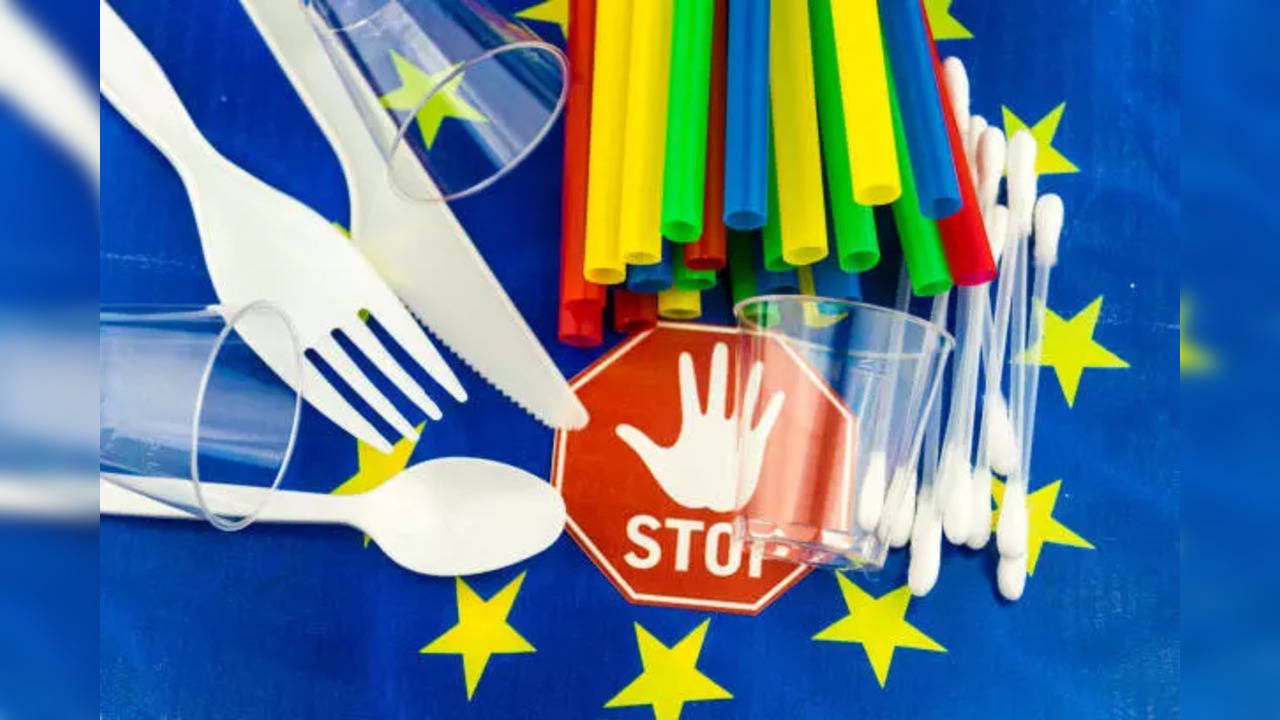The hunt for viable plastic alternatives
Even as the single-use plastic ban comes into effect, concerns over efficacy, cost-effectiveness and enforceability of the policy persist.

Representative Pic
Photo : iStock
New Delhi: The ban on single-use plastics came into effect on the 1st of July across the country as notified by the central government. The ban is effective on manufacturing, importing, stocking, distribution, sale, and use of identified single-use plastic items.
These items include earbuds with plastic sticks, plastic sticks for balloons, flags, candy sticks and ice cream sticks, plates, cups and glasses, cutlery (forks, spoons, knives, straws, trays, wrapping/packing film), invitation cards, cigarette packets as also plastic/PVC banners less than 100 microns.
While a number of industry players initially opposed the ban citing cost issues of plastic alternatives, most have now announced that they will comply with the ban and use imported paper packaging despite the high costs.
Is India Inc well-prepared for the policy shift? “We’ve made all the arrangements to comply with the government guidelines. Obviously, there were some challenges, because the entire industry is simultaneously working on the transition. But at this point, we have started production of our milk-based beverages in integrated carton packaging with paper straws as per the guidelines,” asserts Pavan Kumar Singh, GM – Marketing, Amul during a panel discussion on ET NOW.
Is the plastic ban truly enough? “No, the ban is not enough. When the final notification for the SUP ban was put out in August 2021, we had tried to point out that the methodology that was used to identify these plastic items was lopsided. The MSME sector manufactures a lot of these items and supplies them to FMCG companies. So, MSMEs are the ones that will feel the biggest impact of the ban, not the big brands. It’s clear that the policy is limited in its scope, and many shops and stores are continuing to use single-use plastics,” observes Siddharth G. Singh , Programme Manager, CSE.
Is enough being done to look for viable plastic alternatives? “Humans are creatures of habit. We don’t change unless we are forced to. But a key point that we’re missing is that the root cause of environmental issues in India is not plastic, it is littering and the fact that we do not segregate waste at the source. Since these aspects are barely being addressed, we will continue to struggle with pollution. And in the process, we will keep wasting the investment being made into the MSME industry,” quips Jayesh Rambhia, Co-Chairman, Environment Committee, AIPMA
“Besides, we are unlikely to see a meaningful positive environmental impact due to the plastic ban. The government has not conducted a health impact analysis about plastic alternatives. Since the start of the covid-19 pandemic, for instance, usage of plastic cutlery and crockery increased because of hygiene concerns. So, such impacts need to be studied properly. Moreover, a large proportion of our most commonly used products are recyclable, provided they’re collected by the local administrations and handed over for recycling. Now, even after 10 years of plastic waste management rules being in place, most municipalities are not following through with them. These are the core problems that we need to tackle most urgently,” concludes Rambhia.
Trending:
End of Article
Subscribe to our daily Newsletter!





Related News





Three Privately Held Raymond Group Companies Remove Nawaz Modi-Singhania From Board; Will Raymond Follow Suit?

IndiGo Places A Fresh Order For 30 New Airbus A350-900 Aircraft to Expand Its Market Presence On Lucrative Routes- Check Full Details

Tech Mahindra Share Price Target 2024: Shares Hit Upper Circuit Post Q4 Earnings 'BUY, SELL Or HOLD'? Check Brokerage Recommendations

Cellecor Gadgets Quarterly Results: Stock Hits Upper Circuit, Check PAT, revenue and other Earnings Details

Vodafone Idea FPO Fundraise Is The Beginning Of A 'Smart Turnaround' Says Aditya Birla Group Chairman









